Jonah Schenker and Students on Pathways and P-TECHs with Ulster BOCES
Key Points
-
Career Pathways Academy at iPark 87 demonstrates how place-based, industry-aligned education systems can transform learning and workforce opportunities for generations.
-
Programs like P-TECH and advanced manufacturing pathways build confidence, self-direction, and readiness for the modern economy through hands-on, real-world learning experiences.
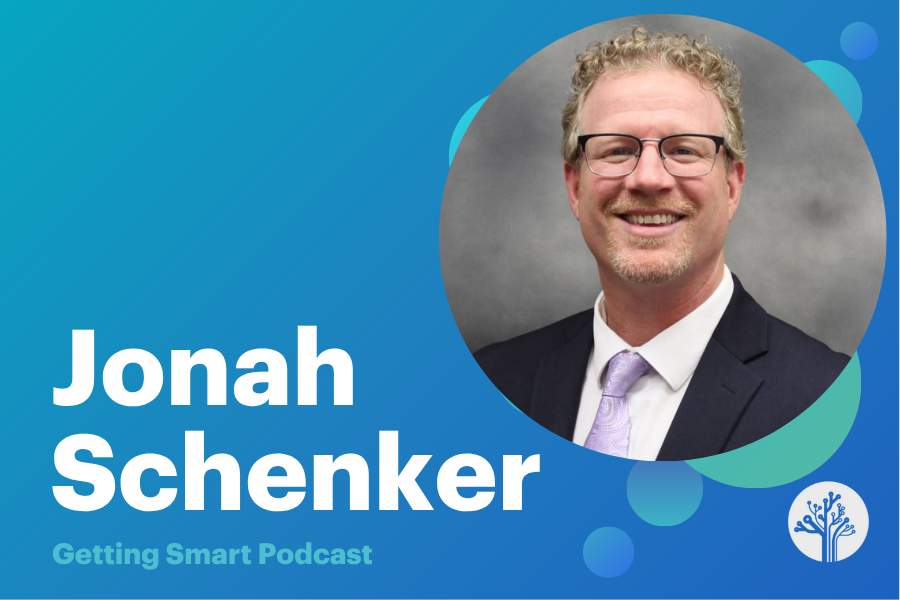
In this episode of the Getting Smart Podcast, host Shawnee Caruthers explores the transformative power of Career Pathways Academy at iPark 87 with a dynamic panel of guests: Dr. Jonah Schenker (Ulster BOCES), John Boolukos (Archtop Fiber), and students Cameren Thibault-Edmonds and Natalie Winrow. Together, they discuss how place-based education, industry collaboration, and learner-centered design can open doors to opportunity, purpose, and belonging. From redefining Career and Technical Education (CTE) to fostering student confidence and self-direction, this episode highlights how intentional ecosystem building can create lasting community impact and prepare students to design the future.
Outline
- (00:00) Introduction to the Getting Smart Podcast
- (02:16) The Heart of Ulster BOCES: A Learner-Centered Vision
- (07:18) Describing the Community and Pathways
- (10:49) Industry Partnership: A New Era of Collaboration
- (24:49) The Role of Advanced Manufacturing Pathways
- (28:50) Workplace Learning Challenges: Real-World Experience
- (33:18) Building a Sustainable Ecosystem for Education and Industry
- (40:02) Closing Thoughts and Future Possibilities
Introduction to the Getting Smart Podcast
Shawnee Caruthers: You’re listening to the Getting Smart Podcast. I’m Shawnee Caruthers. Today’s episode is one I’m especially looking forward to because we’re talking about the kind of bold, place-based investment in young people that not only prepares students for jobs but transforms futures. I’m joined by a powerhouse group connected to SRA and their visionary new Career Pathways Academy at iPark 87, opening in September of this year.
This initiative is about more than steel and concrete. It’s about creating real-world opportunities for learners across the region and designing a learning environment that mirrors the innovation we want to see in our communities. We have with us Dr. Jonah Schenker, the district superintendent of Ulster BOCES, who’s leading with a deeply learner-centered vision of what CTE can and should be.
We’re also joined by John Boolukos from Archtop Fiber, an industry partner who’s not just talking about next-gen broadband but actively building the kind of infrastructure that makes modern learning and careers possible. Representing the heart of this work—the students—we’re honored to have two remarkable young scholars: Cameren Thibault-Edmonds from Highland Central School District, who’s leading both in the advanced manufacturing pathway and as student council president, and Natalie Winrow from Kingston City School District, also in the advanced manufacturing pathway, showing us what’s possible when students are given access to meaningful, hands-on learning.
As a former CTE director myself, I know firsthand how a facility like this—built with intentionality, industry alignment, and student agency—can change the entire trajectory of a learner’s life. We’re not just opening doors to careers; we’re opening doors to purpose, possibility, and belonging. So today, we dig into what it takes to build these pathways—from leadership and vision to partnership and practice—and why this moment matters more than ever. Let’s get into it, guys.
It is a full house. It’s so great to have you all on the show. Welcome, everyone.
Dr. Jonah Schenker: It’s good to be here. Thank you.
Cameren Thibault-Edmonds: Yeah. Thank you.
Shawnee Caruthers: Yes, of course. So great to see you all. And Natalie and Cameren, thank you for joining us. We always love to have student voices on the podcast, so thank you.
Cameren Thibault-Edmonds: Mm-hmm.
Natalie Winrow: Thank you for having us.
The Heart of Ulster BOCES: A Learner-Centered Vision
Shawnee Caruthers: Jonah, can you help us locate Ulster BOCES—not just geographically, but philosophically? What is at the heart of this place and the community you serve?
Dr. Jonah Schenker: Awesome. Thank you so much. We’ve got two students—it’s summer break, and they’re here in the middle of the day for the podcast. That really says something, right? Let’s just ground it in what it is—they’re here for a reason. Ulster BOCES is an educational service agency. There are 37 BOCES in New York State. I’m the district superintendent, so I get the awesome responsibility and privilege to lead both the BOCES and serve as a direct report to the commissioner.
We are in the Hudson Valley in New York, about halfway between New York City and Albany—a beautiful, beautiful area. This new facility that we’re talking about is in Kingston, New York, at the former IBM site. This site has had a legacy of failure, and we are breathing life back into it. Super, super excited—still a lot to do.
But you asked what’s at the heart of BOCES, and two of those are on this podcast. It’s about students. No matter what the work is—whether it’s professional learning, leadership work, technical support, or bringing broadband and Wi-Fi—it’s all based on creating amazing experiences. People talk about preparing students for the next generation of the workforce and the future. I think about it differently. I think about what skills we need to prepare them with to actually be the designers of a new future because I’m not so happy with the way things are out there right now.
These two students are just representatives of the work happening across our programs. The core mission of BOCES is about shared service, efficiency, and connections. We are super excited that our friends and partners at Archtop Fiber are there, waiting for us to arrive—a whole bunch of staff and 1,500 students—so we can start thinking about the skills, dispositions, and experiences that are going to do just that.
Shawnee Caruthers: I wish the listeners could see John’s face when you said they’re just waiting for you all to arrive. It was a mix of joy and nervousness about having all the kids in that space. But John, we’ll get to you in a moment. I know you’re genuinely excited, and it’s so great to have an industry partner.
Cameren and Natalie, I’ll come to you for a second. One of the things Jonah mentioned was about these amazing experiences that students need to have, and we’ll dig into that in just a moment. But one of the things he also said that really stood out to me was that students need the skills to be designers of a new future. He mentioned some of them as they relate to BOCES—like efficiency and connection—and then there are others, like collaboration and problem-solving. I’m really curious, from your perspective as students, what are some of the skills you think students need today to be ready for a new future?
Natalie Winrow: All right. I think a really important one is the ability to communicate effectively with industry partners, teachers, and other students. It’s really the key to being able to share ideas. You can be the most brilliant person in the world, but if you can’t share it, it’s not going anywhere. It’s extremely important that students, especially at BOCES, because we do a lot of trades, have the ability to communicate with each other and even outside. Communicating effectively—that’s the biggest part. It’s really what makes or breaks a student, I think.
Cameren Thibault-Edmonds: As for communication, I feel like a big part of being a student in today’s generation is being self-directed and understanding that some of the work you have to do, you have to do it. You can’t wait for someone to tell you what to do. I mean, especially in the work that I do at Hudson Valley Pathways Academy and the work that Natalie knows well in workplace learning challenges and things like that, you have to study on your own. You have to figure out what your design’s going to look like.
Especially with student council—how we didn’t have a student council for the better half of a year. Seeing that and seeing what we could change, like the problems in our community, I took self-direction and focused work, and I decided to start it back up. I got a few helpful young scholars to work with me, and that’s what makes self-direction so key and vital to schools.
Shawnee Caruthers: Great. Truly, Cameron, you both have given us something to think about as it relates to communication. And Natalie, like you said, it doesn’t matter what you know if you can’t say it and get the message out there. And then Cameron, this notion about being self-directed—John, I’m going to ask you a question about that in a second, about just the difference between initiative, which used to be kind of the buzzword, and now being more self-directed. I think there is a thin line that is important to delineate what that looks like.
Describing the Community and Pathways
But Cameron and Natalie, you also heard Jonah describe the place geographically and philosophically for BOCES. But I want to hear how you would describe your place—your school, your pathway, or your community in New York in general. How would you describe it? What do you love about it? And then what’s a big question that you all are still wrestling with as a young person growing up in your place?
Cameren Thibault-Edmonds: Yeah, so how I understand basically being part of Hudson Valley Pathways Academy and further engaging in deeper learning, of course, working on everything that I do in advanced manufacturing and so on and so forth—I think the best part, especially in the P-TECH program, is cultivating a community and being able to learn how other people work around you and collaborate. That’s also kind of my favorite thing about it—being able to understand other people in your school so deeply just because of how tight-knit the community is.
And one question that I have is just, how good can it get? You know, I’m only in chapter two—I just got out of my chapter two year, which is sophomore year. I’m going into my junior year now, so I can’t wait to see what other opportunities may come.
Dr. Jonah Schenker: Can we just pause for a second and recognize the age and brilliance here? I pray for this kind of insight to walk into an interview with folks who have master’s degrees. I just wanted to call that out.
Shawnee Caruthers: Yeah, and rightfully so. I was thinking the same thing, Jonah. I love that Cameron described his sophomore year—or going into his junior year—as finishing chapter two because he’s right. There’s so much of his life book that just hasn’t been read, and he’s just like, “I’m just on chapter two,” recognizing that it will get better, and he just doesn’t know how good it’ll get yet. That is beautiful.
Dr. Jonah Schenker: And I just want to add, because you mentioned it, the rationale for him using “chapter” is intentional. At Ulster BOCES, we talk a lot about the industrial model of schooling—what we need to let go of, what we need to bring forward, and what we need to design anew. And changing language that’s tied to systems that are not about access is something we’ve intentionally let go of.
At Hudson Valley Pathways Academy, they’re not freshmen, sophomores, juniors, and seniors, which define a period of time where success has to happen or you’re a failure. They refer to themselves as chapter 1, 2, 3, and 4 because everybody’s entitled to read the book at their own pace. We’ve redefined what success means, so there’s a story behind that.
Shawnee Caruthers: This is way deeper than I thought it would be, and I’m here for all of it. Natalie, what do you have to say?
Natalie Winrow: I mean, in terms of what P-TECH and BOCES have really offered and what they are at the core, it’s really just opportunity—opportunity to meet people, interact with people, and learn about yourself. Cameron really kind of hit the nail on the head there. For me, because I’m going into my chapter four senior year, it’s given me opportunities. Currently, I’m doing this at my job—I took my break to do this podcast. I was like, “All right, I gotta go, I gotta go.”
But my big question would be, how far can I take my education? How far can I take my experiences in my life? Because things I learned in my chapter one year—how far can I advance them? How far can I use them? That’s really my big question: how far can I get with this?
Industry Partnership: A New Era of Collaboration
Shawnee Caruthers: That’s great. And John, back to what we were kind of saying a little bit earlier—these students have, and to Jonah’s point, surpassed what we would expect of a student in their chapter two or chapter four era. I think they’ve moved from just that baseline of showing initiative to truly being more self-directed.
How would you define that, and what kind of power does that hold for an industry partner when you have students who are coming to you steeped in self-direction?
John Boolukos: Yeah. I mean, it gives us power; it gives us hope. I met Jonah probably two years ago at an event, and he was describing his vision for Ulster BOCES. I thought it was amazing—I wished I was a student again. But then I had some of the students come up and speak, and just recently, we did the same. I was blown away. I listened to Cameron and Natalie today, and I’m like, “This is…” I wish I was working for 20 more years because this workforce is going to be amazing.
We were the first tenant at iPark, and there were a number of industries and employers thinking about coming in. When we saw that it was going to be BOCES, we were just so excited. We’ve hired a couple of folks from P-TECH and BOCES, and just to know that we can help with the curriculum, collaboration, and cooperation—but most importantly, when I hear from Natalie, Cameron, and the other students, I have so much hope and excitement for the future. That’s why we need to partner. We need to make sure we’re preparing everyone for that future and that there are jobs there. That’s kind of our role, right? If there aren’t jobs for people like Natalie and Cameron to be excited, successful, and have the future they want and deserve, then we’ve missed the point as an industry leader.
It’s just so exciting to be able to partner with Ulster BOCES and the students. We’re going to help build a curriculum that engages a modern workforce. Part of the reason we’re here at Archtop is that the economy has become increasingly more digital—more digital than I could have ever imagined. Part of the requirement there is a high-speed internet provider, and that was missing in the Hudson Valley. That’s one of our missions: to be here for the unserved and underserved communities and continue to bring high-speed internet as the global economy, the modern economy, becomes more digital. But yeah, I couldn’t be more excited. Every single time I meet a student, I just get more and more excited about BOCES becoming our neighbor.
Shawnee Caruthers: Yeah, and John, you mentioned the modern economy, and I’m sure that as an industry partner, you all are shifting your practices because students are coming more prepared. You’re kind of thinking through how the baseline for students entering the workforce used to be really different. Now, because they’ve had so many high-value experiences in high school, you also have to think a little bit broader about how to elevate your own curriculum so that they stay excited and engaged.
John Boolukos: Yeah, absolutely. I mean, I look back at my own educational experience, all the way up through getting an MBA, and none of those things prepared me for this workforce and this economy. Then, when I listen to what Natalie and Cameron are working on and the type of engagement, cooperation, and collaboration, it’s just amazing to me that this can be done. I think other schools should take notice of what’s happening at Ulster BOCES.
Shawnee Caruthers: Yeah, totally agree. Speaking of taking note, Jonah, one of the things that you all do at BOCES is your three tiers of advocacy. I would love for you to share what that is and how BOCES evolved from offering one-on-one opportunities to truly institutionalizing career-connected learning in a way that feels more integral and curative for each learner.
Dr. Jonah Schenker: Sure. Part of this project is around this kind of physical plant—iPark 87, the former IBM site, with millions and millions of square feet. What we’re really looking at is, yes, this school is going to be amazing, but it’s an ecosystem. It stems from the systems work. We have a lot of people working really hard on what the school is going to be. My hope is that we are building a blueprint that redefines economic and workforce development as equity work, as community revitalization work, and as creating not just a one-size-fits-all for this iPark project but a blueprint that can be replicated across the state and country. We know this isn’t just an Ulster County issue.
For over a decade, I’ve talked about the disconnect I see in economic and workforce development. It’s usually a conversation about adults or postsecondary education, and we need to flip that. We actually need to abandon that. Someone recently said, “If you want to go to the moon, you don’t try to retrofit the horse cart.” That’s just not what we’re about. Until we center the 20,000 students in Ulster County as the future of the economy and workforce, we’ll be growing a tree 30 feet up in the air without tending to the roots.
There’s also an efficiency problem with economic and workforce development at the county level—two- and four-year colleges, workforce development boards, and all those entities that create this web. I always state that there are wonderful, hardworking people doing awesome things; they’re just not interconnected and pulling in the same direction. Inherent in who BOCES is, is about coordination. We don’t want to necessarily make this a BOCES thing; we just want to host the party. Everybody’s invited, and let’s be really thoughtful about how we engage industry or community partners so we’re not wasting their time. We have to minimize the impact on industry and create high-yield opportunities.
The other piece is that we have a system of schooling in this country that’s based on an industrial model that isn’t about all students. It only values an academic pathway toward four-year institutions. That’s what it’s built on, and everything else is seen as less than. If we want to shift the perceptions about Natalie’s pathway or Cameron’s pathway—because I’ll put that against anybody else’s—we have to shift that mindset and narrative, not at the adult level but at living room tables, kitchen tables, and soccer fields of middle school students. It’s okay to go straight out of high school into a two-year program, an accredited program, an internship, or directly into work.
This type of work starts with being relational. For example, Jonah builds all these good relationships, gets opportunities for kids, and then Jonah leaves or John leaves, and it’s gone. Moving it from that to a community where it’s structural, institutionalized, and a way of being and showing up is part of the fabric of how we operate. This is legacy work. It’ll be great in September, but this has the potential to shift outcomes for generations to come if we do this work right. Moving it from human-dependent to just a way of knowing is the architecture underneath that.
I don’t get to work on a daily basis with Natalie in the classroom. I’m out thinking about that type of stuff. Again, why I’m most excited about iPark is that it’s a physical presence to represent the metaphor we’ve been talking about. This has the opportunity to be a lighthouse. Students like Cameron or Natalie get to do awesome stuff with awesome people and awesome technology along the way.
Shawnee Caruthers: Like you said, Jonah, it just takes an ecosystem—a community of people—to create that legacy work. John, you’re definitely a part of that. I’m really curious because what we know is that industry has to be so aligned with educational institutions to create real change and to create that pipeline that’s so needed for the designers of the new future. Who initially pulled in Archtop Fiber into the work with Ulster BOCES, and how has your own thinking evolved as you’ve worked more closely with Jonah, Natalie, Cameron, and others to make this work possible?
John Boolukos: I think it was a very natural kind of connection. We had met prior to Jonah knowing this was a done deal. We probably had that vision. Then we had the prior CEO for the landlord, National Resources, who had a vision for what this facility could be. I’ve met a lot of people over the last two and a half years who came to this area because their parents or grandparents worked for IBM and thought they’d be there forever. When IBM left, it was devastating. Nothing has really happened with this facility since then. I think we’re breathing life into it collectively and together.
I remember our first hire was a network engineer. He had just graduated from SUNY Ulster and went through the P-TECH program. He was only 20 years old when we hired him, and he was one of the most brilliant people I’ve met. There are people who’ve been in the industry for 15 or 20 years who didn’t have the skill set he had at 20. That’s the kind of jobs we want to create.
I love what Jonah said earlier—we want to create something that’s sustainable well past when we’re all gone. That’s why we want to continue to grow. But we can’t do that without great employees who are prepared to come into this workforce.
Dr. Jonah Schenker: I just want to add, campus-wise, in that ecosystem you mentioned—where are we getting the jobs, and where are people going to live? Again, this is larger than the school. The plans for this ecosystem over the next few years include 750 units of housing for employees on the campus. The county government and Ulster County economic workforce development offices will also be on-site. It’s not just about talking about what partnership is but getting into the same space together, which is where we know the magic happens.
John, you said something earlier about your experience going through your master’s program. As I’ve had conversations with Natalie and Cameron and listened to the certifications they have, the experiences they’ve had, and how many times they’ve been out in industry doing challenges—by the time they finish, they’ll have been involved in 20 projects with different industry partners. You’re not getting that in a four-year college or even in a master’s program. That’s why they show up to events with the ability to network. Natalie said recently at a breakfast, “Here’s why you’re going to want to hire me, and I’ll choose who the best match is.”
John Boolukos: Yeah, and I wanted to hire her on the spot, but I didn’t get her fast enough.
Shawnee Caruthers: I love that students now have that kind of control, right? It’s like we’re doing Tinder for jobs, and it’s so crazy. Because they do have so much experience, that’s wonderful.
The Role of Advanced Manufacturing Pathways
Shawnee Caruthers: Natalie and Cameron, we know specifically that you all are in the advanced manufacturing pathway. I want to talk for a second about that. What has that pathway taught you about what you’re actually capable of? It sounds like your confidence has been truly built up, which is great because you have all of these experiences and connections now. What has this pathway taught you about what you’re capable of, and has it changed how you see your future or what’s possible for your hometown? Natalie, I’ll start with you, and then Cameron.
Natalie Winrow: In advanced manufacturing, I didn’t grow up in a technical household. My dad had the garage with the car, not the household shop. I didn’t grow up with the skill sets. When I walked into my freshman year, I did robotics. I showed up and just got to work. I didn’t know so many things that I now know as second nature.
This pathway really gave me confidence in what I can do. I didn’t know I could run machines, particularly CNC machines. I’m certified in our lathe and mill, as well as OSHA-certified. Everyone at BOCES gets OSHA-certified, but we also have all these other skills that really boost your confidence, open up opportunities, and give you the faith in yourself to take them.
Cameren Thibault-Edmonds: Yeah. In advanced manufacturing, we’re working with mills and lathes—turning and milling—so we get certifications in those in our two years. We also get OSHA certification along with it because, in order to be in the workshop, you have to have OSHA. Engaging in that pathway and robotics, as Natalie talked about, was a great step into engineering for me that I never knew I’d take if I were still in a traditional high school program.
When I did the mechanical, electrical, and software work in robotics, I gained all these skill sets that I can use in the future. I’m going to use them next year in the robotics season. It’s going to be great to see how that works and how it’s going to go in my future. It’s all thanks to BOCES, obviously, because of the funding they put into FIRST Robotics and the program. That’s all I have to say about engaging in the pathway.
Shawnee Caruthers: I love that you all didn’t come in with the experience, but you were just like, “Hey, why not? What can it hurt? Let me just try it.” You were able to find your way and your confidence as a result. Natalie, before we started that question, they were talking about how you kind of have your pick of who you want your employer to be, not the other way around. How does that feel?
Natalie Winrow: Five-year-old me wanted to go to the Olympics for swimming, but I changed my mind. I want to go elsewhere now. BOCES just gave me options I’d never even thought of. I talked to my mom, and she said, “You’d be a really good salesperson.” I asked, “Why?” and she said, “Trust me.” Here I am. Part of what I do so often at BOCES is networking. I go to these industry luncheons all the time, and my mom’s like, “I told you, I told you.” It’s really uplifting.
Shorts Content
Workplace Learning Challenges: Real-World Experience
Dr. Jonah Schenker: I think there’s one thing—
Shawnee Caruthers: Jonah, listening to Natalie and Cameron’s experiences, they’re doing very adult things, right? They’re having to make difficult decisions with limited information and with people they barely know. That’s literally what we do every day out in the real world. But you’ve also designed a space that supports that kind of intergenerational thinking and learning because, at BOCES, you all are going to have a space that’s open from 2:30 to 10 p.m. where students and adults can be under one roof, learning side by side. They’re getting practice now. Why does that matter? Why was that important to you, and what does it take to build that kind of culture?
Building a Sustainable Ecosystem for Education and Industry
Dr. Jonah Schenker: Yeah, so most of the programs that Natalie and Cameron are speaking about are the programs that are during the day. They’re either coming to us half-day as part of their high school experience, or they’re in a P-TECH program, which is a full replacement program. They come to us as rising eighth graders and stay through their associate’s degree. But again, one of the other areas that BOCES handles is adult education.
We’ve got some great programming, but there’s a huge opportunity in this site—iPark 87—keeping the lights on between 2:30 and 10 p.m. We’re thinking about the robust use of our programming, growing it, but also industries being able to leverage our spaces for training and upskilling. We want community colleges to partner with us as they already do, but we want to increase that. Four-year colleges, too. We want it to be a vibrant space so that, again, it’s about BOCES having built and created this space, but it’s for the community, with the community, and about the community.
I’m super excited about that progression. The integration is no different—it goes back to that original idea of pulling in the same direction and creating the interconnectedness that we need to see.
Shawnee Caruthers: Yeah, no, I am here for all of that. John, as a business leader, you’ve listened a lot in this conversation, and of course, you’ve been really integrated into the work that’s going on in your area. How do you view your specific company’s role in education? And in your opinion, what shifts when companies move from being just sponsors or donors to true co-creators of learning experiences?
John Boolukos: That’s a great question. Watching this from the very ground floor—looking at this building and the fact that Jonah and his team thought, “We can convert this space into exactly what we want,” and then being on-site every day, walking through, and seeing the progress we’re making—it’s clear this is going to be so different from any school I’ve ever been involved with.
My passion has always been about coaching, teaching, and leading. It’s probably how I got into a leadership position to begin with. I coached high school swimming—Natalie, you’ll appreciate that—and I had that same vision. I coached for two years and really thought about becoming a teacher. I don’t think I could have avoided that if I had met someone like Jonah and his staff. But instead, I went into the workforce, and I had to find my way. I didn’t have the certifications or the vision.
So now, at this point in my career, I want to make sure that I’m giving back. How do I not only leave this company in a better place because we brought in great employees, but how can we extend that to the community? How do I get an opportunity—and how does our company get an opportunity—to really be there, not only at the ground floor of the construction but to watch this curriculum grow?
We want to create certifications that make sense. We’ve talked a lot about certifications. We have so many different roles—technicians, engineers, warehouse and logistics teams, customer service. How do we create certifications in partnership with BOCES that make the most sense? I think I’ve heard these words a couple of times today: purposeful and intentional. That’s what it’s about—not just showing up with a book and getting through the day.
Shawnee Caruthers: Yeah, no, and that’s when the work really starts to matter, right? That’s when the ecosystem comes together and creates, like Jonah said, this legacy. Before we finish our conversation, I want to end with a quick one, which is: I want you all to give me a word. Career education should feel like blank. But before that, Natalie, you talked about five-year-old you, and I just want you to say something to that little girl. What would you say to five-year-old you?
Natalie Winrow: I’d say to her that she can do so much more than she originally thinks she could. That she finally got to use a drill—Dad wouldn’t let her use a drill. She finally got to use a drill. And all those little things that she was too nervous to try—she should have done them. Because even if she did it wrong and got a little embarrassed, she would’ve learned so much more from taking that opportunity versus sitting on her hands.
Shawnee Caruthers: Okay, Cameron, you’re in the hot seat. Career education should feel like…
Cameren Thibault-Edmonds: Career education should feel like opportunity.
Shawnee Caruthers: Got it. Jonah?
Dr. Jonah Schenker: Purpose.
Shawnee Caruthers: John?
John Boolukos: Hope.
Shawnee Caruthers: And Natalie?
Natalie Winrow: Safety.
Shawnee Caruthers: Ugh, I love that. And before we wrap up, Cameron, you mentioned something earlier about robotics and staying late. Can you share that again?
Cameren Thibault-Edmonds: Yeah, before we end off, just going back to what Dr. Schenker said about keeping the lights on from 2:30 to 10 p.m.—part of robotics and the difficulty of it is that we have kids who will stay there until 8:30 or later, just trying to make things work, weeding out the problems, and being able to know that there’s that safety. That we’ll be able to stay there, complete things, and do what we need to do to get that robot done. It’s also a great help to the kids in the robotics program.
Shawnee Caruthers: Cameron, thank you so much for surfacing that. That right there is called flow, and that’s what we want all kids to get into—that they’re so immersed in something they love that they lose all track of time and just want to sit there and figure it out. I love that you brought that up.
Closing Thoughts and Future Possibilities
Shawnee Caruthers: This whole conversation—what you all are doing in New York—is truly the heartbeat of this work. Huge thanks to you, John, Cameron, Jonah, and Natalie, for dropping knowledge, sharing stories, talking to our five-year-old selves, and reminding us why this moment and this model matter.
Jonah, your leadership is proof that a system can be both strategic and deeply human. John, you’re showing what real partnership looks like when industry rolls up its sleeves. And Cameron and Natalie, you are the blueprint. You’re smart, driven, and showing us all what the future can be when students are seen, heard, and supported.
Again, I’m Shawnee Caruthers. Thank you for tuning in. Keep showing up, keep pushing forward, and don’t forget—the pathway to possibility starts with believing it’s possible. Until next time. Thanks, guys.
Guest Bio
Jonah Schenker
Jonah M. Schenker, Ed.D., of New Paltz, New York, was appointed the new District Superintendent of Ulster BOCES, effective March 23, 2023. Schenker will serve a dual role as the state education commissioner’s representative for the eight local component school districts in the Ulster BOCES region, and as chief executive officer of Ulster BOCES. The Ulster BOCES Board of Education approved Schenker’s appointment on Wednesday, March 22. He also needed approval of New York State Commissioner of Education Betty A. Rosa, Ed.D., which was secured on March 14.
Dr. Schenker received his Doctorate in Education Leadership from The Esteves School of Education, at The Sage Colleges, in 2015. Dr. Schenker began his formal education career as a classroom teacher in inner city/urban settings, as well as rural school districts. His focus on building non-traditional, sustainable schools and relevant teacher and student learning communities that prepare schools for the future was instrumental in his school being recognized as a White House Next Generation High School in 2016. Dr. Schenker received a Global Leadership Scholarship in 2016, which gave him the opportunity to explore systems around the world that are at the forefront of educational reform. It is through this lens that he has developed a true understanding that in order to lead a group, institution, company, or a people, it is crucial to have the ability to inspire passion and leverage the strengths of individuals.
John Boolukos
John Boolukos is a dedicated professional at Archtop Fiber, where he plays a key role in advancing next-generation broadband solutions across the region. With a strong commitment to community engagement and workforce development, John actively supports youth-centered innovation through partnerships and mentorship. His collaborative spirit, industry insight, and forward-thinking mindset make him a valued leader inshaping meaningful opportunities
Cameren Thibault-Edmonds
Cameren Thibault-Edmonds is a Chapter 2 young scholar from the Highland Central School District. Enrolled in the Advanced Manufacturing Pathway, he serves as President of the Student Council and is a driver for the school’s FIRST Robotics team. A standout at school events and a respected voice among peers, Cameren demonstrates how creativity, leadership, and initiative can shape both community and innovation.
Natalie Winrow
Natalie Winrow is a Chapter 3 young scholar from the Kingston City School District enrolled in the Advanced Manufacturing Pathway. She has led interdisciplinary projects, captained the 2025 Robotics Team, and earned distinction as a SUNY ESF Outstanding Research Poster Winner for her work on sustainability in additive manufacturing. A FIRST Robotics Dean’s List finalist, Natalie models leadership, vision, and a passion for purposeful design.
Links
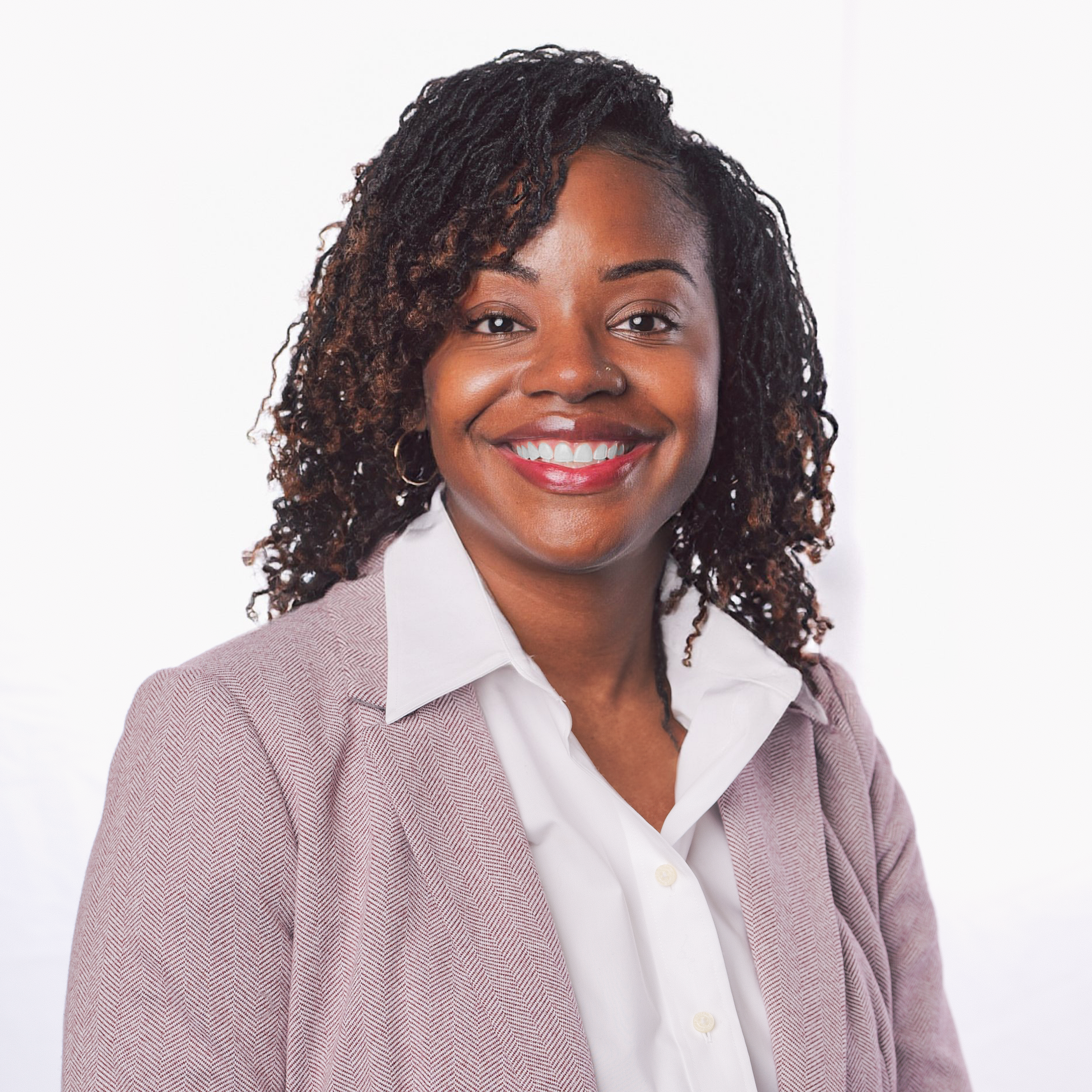


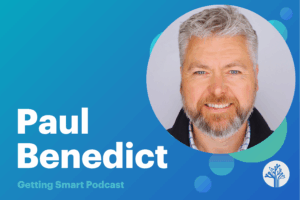
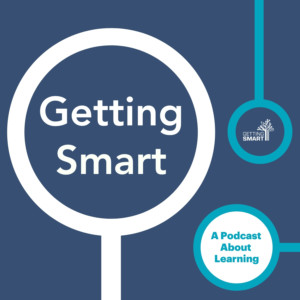

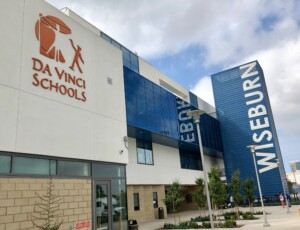
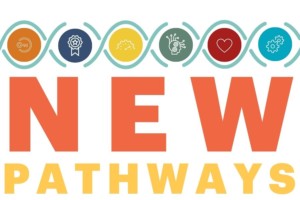
0 Comments
Leave a Comment
Your email address will not be published. All fields are required.